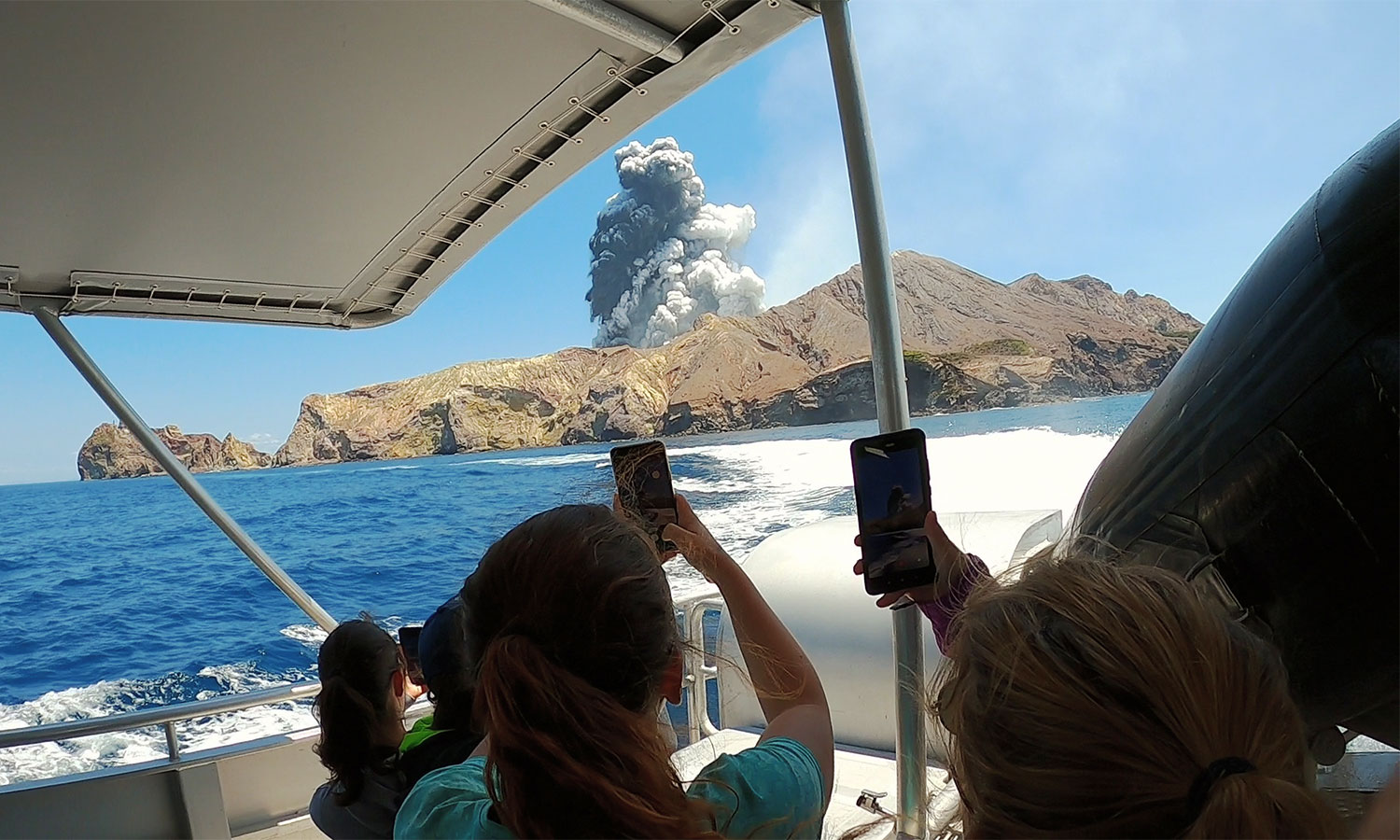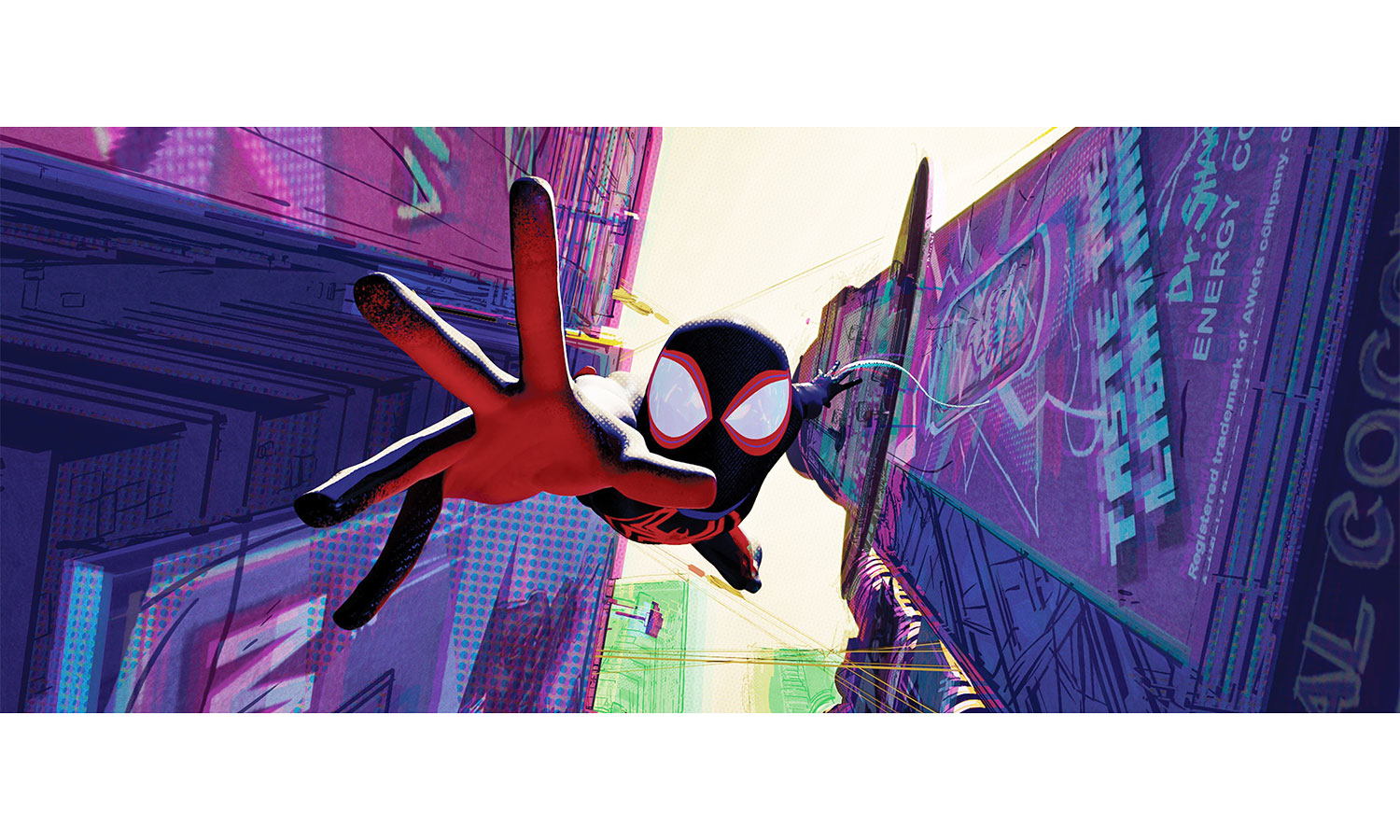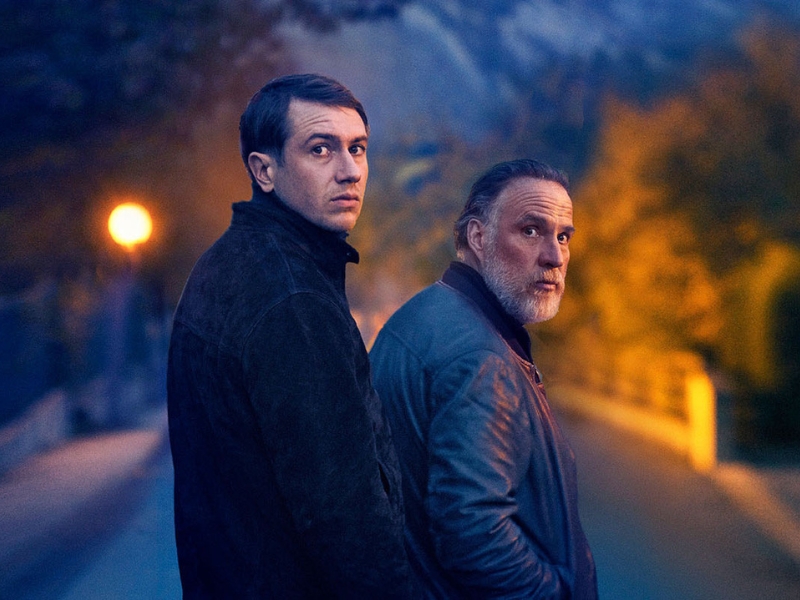Reflecting on the themes explored by Rory Kennedy, director of “The Volcano,” I must first calm my nerves, unclench my stomach, and tamp down the emotions that were aroused in watching this spectacular film. Written by the team of Mark Bailey and Dallas Brennan Rexer, Kennedy tells the story of the eruption of Whakaari, the White Island, on the north coast of New Zealand in what is called the Taupõ Volcanic Zone. Whakaari is an adventure tourism destination, long thought to be relatively safe even though the volcano on the island is active.
There was nothing unusual on Dec. 9, 2019, when two tourist boats took the hour and a half journey to the island. Some were passengers of a cruise ship taking one of the recommended excursions for that day, others were tourists from Australia and other parts of New Zealand. All were looking forward to a relatively unambitious hike to the crater and a selfie to remind them of this adventure. That the volcano was at a Level 2 risk, indicating a higher level of activity, wasn’t deemed to be a problem by the guides. Whakaari was almost always at risk level 2; level 3 signified eruption. Paperwork was signed acknowledging the risks entailed with such a trip, but all risks were played down. After all, what activity exists without risk?
The boat ride to the island was through rough seas that day, and, in retrospect, seems portentous. Choosing a faster route, only 20 minutes, one small group accompanied helicopter pilot and tour guide Brian Depauw, who landed his aircraft on one of the small existing helipads on the island.
The Kiwi tour guides were well trained and, for the most part, very experienced. One group was led by Hayden Marshall-Inman making his 1,111th trip. Tipene Maangi, a Maori tour guide, was a last minute substitute on the trip, and Kesley Waghorn led another group.

Particularly helpful are the graphics illustrating the routes taken by the groups up to the crater and what the presumed route down would be. Because the volcano is active, there is the constant presence of steam at the crater, making it difficult to determine the normal steam conditions and that of increased levels. Another drawing showed how the steam builds up from the pressure created by magma rising up from below. Even the normal “safe” level of steam makes it difficult to breathe, necessitating gas masks. Hard hats are worn to prevent injury from possible falling rocks.
Timed visits allowed for one group to return as another group ascended. But something was amiss. The level of steam was increasing, the surrounding rocks were glowing eerily, and the atmosphere was hotter. Group one had made it safely down the rocks and to one of the boats when all hell started to break loose at the top. Standing at the edge of the crater, the second group began to panic. “Run!!” one of the guides shouted. But not all of them could.
Interviews with survivors and some of the victims’ families infuse this film with a “you are there” immediacy. The struggle just to survive is told as though they were still in the middle of their battle to get out. Adding to the propulsive danger felt by viewers to this story is the spectacular cinematography as the aerial footage shows the power of the eruption, the difficulty of the terrain, and the claustrophobic hills enclosing the escape routes.
This is also a tale of heroism, not just of survivors aiding others but also of local citizens putting themselves in grave danger trying to help where they can, under circumstances that are nearly impossible. You will meet Mark Law and Tim Barrow, commercial helicopter pilots, who, upon hearing of the disaster, climb into their cockpits, land under death-defying circumstances and put themselves at risk for strangers.

Some of the tour survivors tell their personal histories bravely and poignantly. But the stories of the witnesses, survivors, and rescuers are highpoints to be encountered by the watching, not by my telling. This is a truly visceral experience. The photos taken by the tourists living through the moment are explosive. Hans Zimmer’s score is as evocative as it is ominous. The work of Directors of Photography Dominic Fryer, Mike Jonathan, Mark Lapwood, and Murray Milne is beautiful, harrowing, and narrative.
A word of caution. The next time you’re given a release of liability to sign, carefully read it and weigh the risks. The difference between risk and calculated risk here was the difference between Level 2 and Level 3. When deciding, ask yourself, who comes out the winner when it’s a contest between human nature and mother nature?
One can only hope that those “adventure tourists” visiting Mauna Loa right now have calculated an escape route that doesn’t involve the Daniel K. Inouye Highway.
Streaming globally December 16 on Netflix.
Neely Swanson spent most of her professional career in the television industry, almost all of it working for David E. Kelley. In her last full-time position as Executive Vice President of Development, she reviewed writer submissions and targeted content for adaptation. As she has often said, she did book reports for a living. For several years she was a freelance writer for “Written By,” the magazine of the WGA West and was adjunct faculty at USC in the writing division of the School of Cinematic Arts. Neely has been writing film and television reviews for the “Easy Reader” for more than 10 years. Her past reviews can be read on Rotten Tomatoes where she is a tomato-approved critic.







